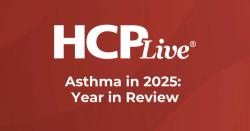
OR WAIT null SECS
Study: Uncontrolled Allergic Rhinitis Largely Driven by Disease in Patients
Using a participant group culled from several countries, investigators believe they have a better understanding on what contributes to uncontrolled allergic rhinitis and what it means for future patient care.
Observational trials from Leuven University Hospitals in Belgium detailed the reasons for uncontrolled allergic rhinitis prevalence in the continent, principle of which were disease-related factors.
Investigators believe the new data could lead to a better understanding of uncontrolled disease and improved care for patients with allergic rhinitis.
The study was prompted by the increased prevalence of allergic rhinitis worldwide, which the investigators believed had reached “epidemic proportions” in some industrialized countries.
Uncontrolled allergic rhinitis was defined as patients who experienced long-term and burdensome symptoms requiring specialist advice in order to establish control and improve their quality of life.
A European expert group defined 4 categories of reasons for uncontrolled allergic rhinitis that Pauline Van Bulck, MD, and colleagues used for the study: disease-related, treatment-related, diagnosis-related, and patient-related factors.
The previously mentioned disease-related factors contributed to the chronicity and severity of the disease. Environmental, occupational, and lifestyle-related factors were also characterized as disease-related factors.
Van Bulck and fellow investigators warned that neglecting the factors found in the 4 categories, specifically disease-related factors, during the evolution of a therapeutic plan could result in suboptimal control and sever chronic upper-airway disease (SCUAD).
The investigators assembled a population of 430 patients between 2015-2017. University centers from different continents were asked to supply 100 patients for the study. Leuven (Belgium), Kinshasa (Congo), Beijing (China), and Bangalore (India) all provided 100 patients, and collaborators in Philadelphia recruited 30.
Participant criteria included the following:
1. A positive skin prick test or radioallergosorbent (RAST) test for inhalant allergies
2. Visual analogue scale (VAS) score of ≥5 for total nasal symptoms and/or severe ocular symptoms despite treatment
3. A minimum of 2 medical outpatient clinic visits for AR in the last 5 years
4. Nasal complaints during a minimum of 1 hour daily in a specific season in the case of intermittent AR or throughout the year in the case of persistent AR.
Subjects were also required to be 17 years or older. The mean patient age was 35.6 years, with 57% female participants.
During the study, patients were asked whether they their symptoms were triggered by occupational or environmental factors or both. Patients were additionally tasked with describing the factors found in the 4 categories used for the study, and certain hormonal differences (which could lead to more severe allergic inflammation in female patients) were considered.
On average, patients with uncontrolled allergic rhinitis had 2 or 3 possible reasons for their disease (35% and 33%, respectively).
The most frequent cause of uncontrolled allergic rhinitis was disease-related (64%), followed by treatment-related (56%), patient-related (54%), and diagnosis-related (47%).
Despite similar results across all participating countries, some differences in reported factors were noted by investigators. Belgium and Congo reported the most disease-related factors while China and India had the most patient-related factors.
Exposure to chemicals, involvement with a hobby, or contact with a pet were some of the environmental reasons recorded in 23% of all patients, while 19% recorded occupational factors.
Additional factors such as poor concordance with therapy and incorrect applications of medicine were also recorded (38% and 34%, respectively), as well as diagnosis-related factors such as structural nasal pathology (26%) and significant nasal septal deviation (17%).
Though much of uncontrolled allergic rhinitis remained unknown after the initial study, Van Bulck and colleague’s optimism over their findings and the future of uncontrolled allergic rhinitis was evident.
“Our study results pave the way for improvement of care of AR patients after a more extended analysis of uncontrolled AR in different health care systems and by different health care providers,” the team said. “Strategies for improvement of AR care can be based on outcomes of such academic trials.”
The study, "A multicenter real-life study on the multiple reasons for uncontrolled allergic rhinitis," was published online in the International Forum of Allergy & Rhinology.


